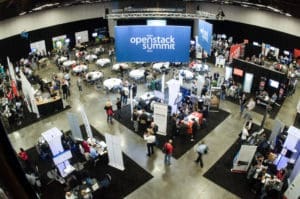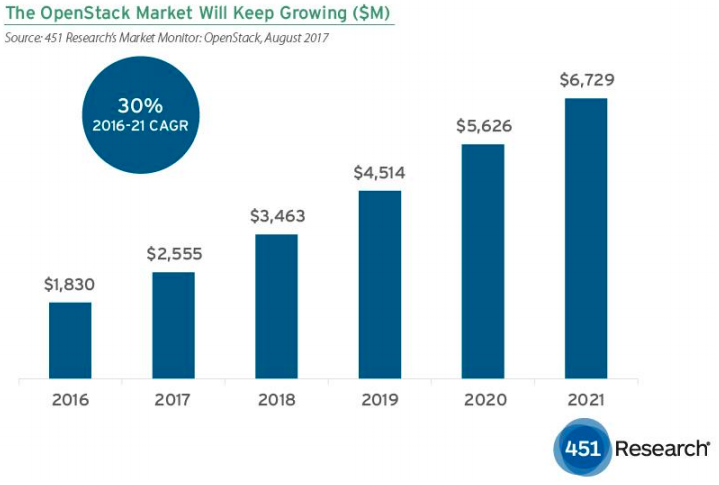
OpenStack was created in 2010 by Rackspace and NASA as a check against the growing power of AWS in the cloud. People were concerned about AWS’s “black box” approach to cloud service delivery and the consortium of companies that started it wanted to create an open cloud project that provided companies with transparent access to the guts of the system, so they could configure it specifically to their requirements.
Over the years though, people have come to think about OpenStack more as a private cloud system than a public one. That is, it’s used to run clouds inside data centers or co-location facilities that behave like public clouds. You can buy services (even if it’s within your own company). The services are elastic, always available, and offer many of the same advantages of a public cloud like AWS, Microsoft Azure, or Google Cloud Platform, but they are under the sole control of the company running the private cloud. You’re essentially billing employees or departments for services they used.
This week, OpenStack held its bi-annual meeting of users and contributors in Sydney, and Mark Collier, chief operating officer of the OpenStack Foundation dropped a bit of bombshell when he announced that the OpenStack has a big presence in the public cloud too. In fact, according to an article in eWeek, Collier told the OpenStack Summit audience that OpenStack clouds are in operation at 51 public cloud data centers around the world.
That was a surprise to many who considered it primarily a private cloud platform. Perhaps equally surprising was the rapid projected growth from 451 Research, who took a look at the state of the OpenStack market prior to the opening of the Summit, and found a healthy and growing ecosystem.
Growing by leaps and bounds
451 found that while OpenStack revenue was around $1.8 billion in 2016, it’s supposed to almost double to $3.5 billion in 2018 and almost double again by 2021 to approximately $6.7 billion. That’s some pretty significant money for an open source-driven project that was considered highly complex to implement just a few years ago.

But OpenStack has been finding its way into enterprises that need to run private clouds like Adobe’s Advertising Cloud, Comcast, or Walmart, which has a huge OpenStack implementation. 451 predicts that by 2018, OpenStack private cloud revenue will exceed revenue from service providers with OpenStack-based public cloud (which I guess shouldn’t come as a surprise).
Part of the problem in the past has been that OpenStack has been difficult to install and managing the rolling updates was a nightmare for admins. They had one version working and along would come another forcing adjustments, but vendors and the community have found ways to deal with that and as they do, the project has grown and developed.
All of this has led to an open source project that is doing what all the best ones do. It’s created an ecosystem of companies around it from big companies like IBM and AT&T, as well a host of startups and contributors. As the platform matures, it’s becoming a significant money-maker, and if 451 is right, that upward trajectory is only going to continue.
Photo: Aaron Hockley on Flickr. Used under CC by SA 2.0 license
